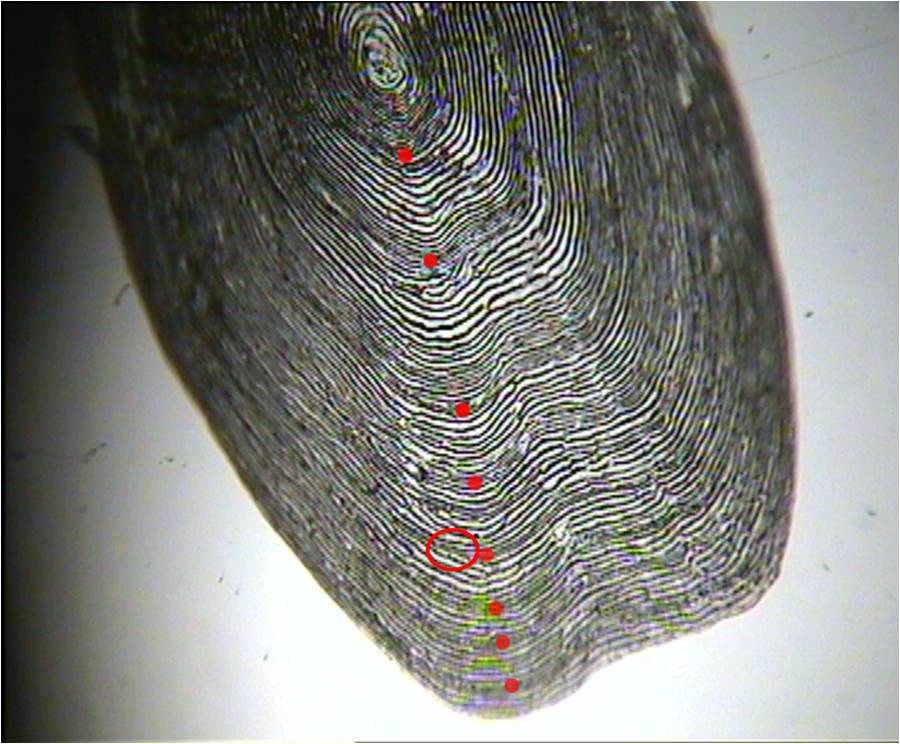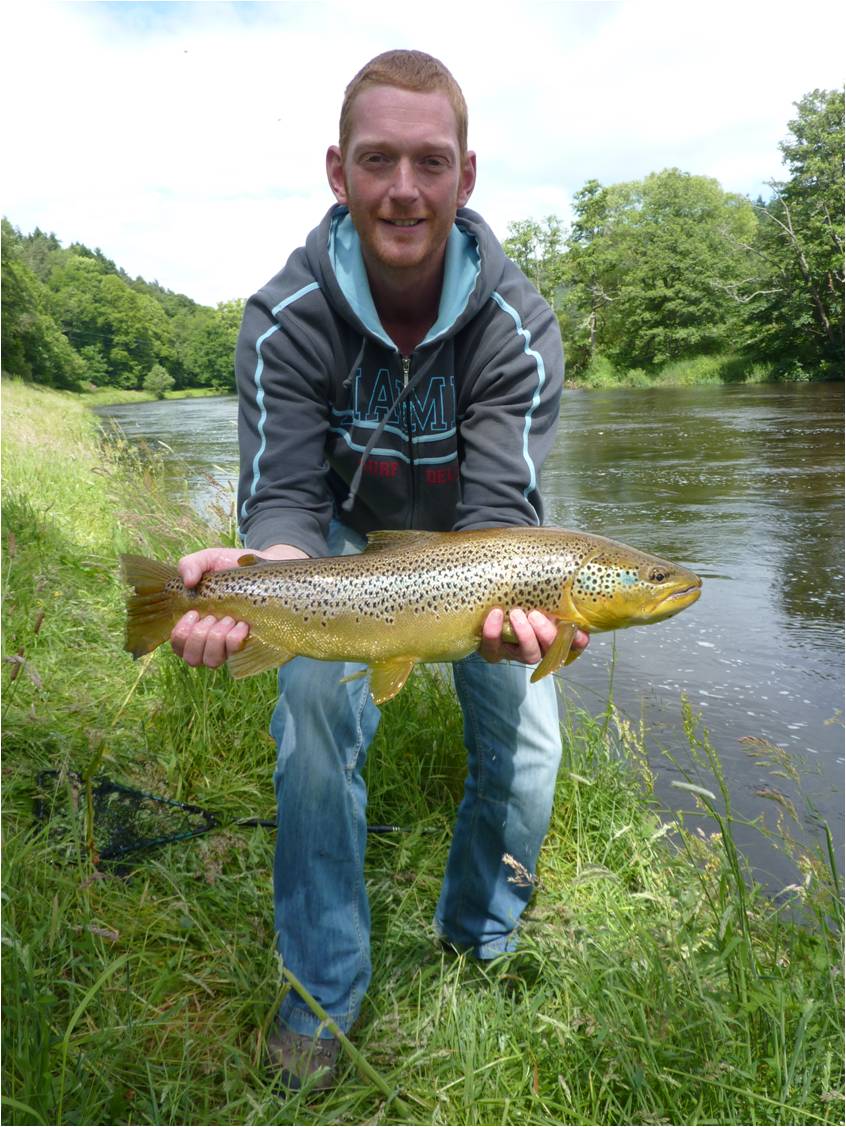Scale sampling and scale reading masterclass from 2013 Urban Conclave

Shaun Leonard gave a huge amount of masterclass training over both days of the Urban Conclave — enabling attendees to benefit from just a small part of his extensive experience in decoding the secrets of the lives (and sometimes deaths) of fish just using visual examination of small samples under a microscope.
Combining the Trout in the Town friendly competition monitoring methods with training in scale sampling (which does not harm the fish)provides anyone who cares about an urban (or rural!) river with a wonderful tool for understanding the fish populations in their river.
For instance, the picture at the top of this blog entry gives a clue to why one of the most commonly-heard myths about taking large fish for the table is completely wrong…
Just by way of explanation, the picture shows a trout scale under a microscope. The scale was taken from the fish (caught and released by the WTT’s Gareth Pedley from the river Tweed) in the photograph below:

Although they are not like the rings in a tree trunk (i.e. one band for each year!) you can still often see periods of time where the growth is slower — and the groups of multiple rings are packed closer together. These more closely-packed groups of rings represent the slower growth during winter. Each small red dot on the top photograph indicates where those closely packed rings jump to more widely spaced rings (i.e. the change from slow winter to faster summer growth). Since trout spawn in winter, counting the number of winter periods out from the centre of the scale is a way of deducing its age.
Not only that, but sometimes the rigours of spawning cause the body of the fish to dig into its reserves of nutrients held in its body tissues. This reclaiming of nutrients from tissues can sometimes be seen in the scale rings (which are made of protein plates overlaid with calcium). When the normally concentric rings of trout scales “cut over” and cross rings of smaller diameter within a winter band — this indicates a period when the body of the fish has been forced to reclaim nutrients from its tissues due to spawning. There is an example of a “cutting over” spawning mark circled in red in the top picture.
In fact, when the original scale was examined with the benefit of being able to focus the microscope in and out (rather than the single fixed focus held for the snapshot above), spawning marks could be found in each of the fish’s last 4 winters. Now, it is not possible to say whether the fish did not breed before that time — but what can be said is that a larger fish will produce significantly more eggs (or milt). For instance, workers on the Celtic Sea Trout project report that a single 20lb female sea trout can produce more offspring in a single spawning than seven finnock. As a broad generalisation, a female brown trout will produce roughly 900 eggs per pound of body weight.
Gareth’s 6‑lb fish from the Tweed was assigned an age of 8 years following scale reading. This means that — even if the fish had spawned in each winter since it matured, its huge body size over the last 3 to 4 years will mean that it has been making a much, much, greater contribution of offspring than it would have been able to as a recently-matured fish.
The calculated growth curve that was generated by combining Gareth’s fish-length measurement with its scale-reading is shown below:

Imagine, therefore, killing this fish as a 3lb (5‑year old) or a 4lb (6‑year old) fish in either 2009 or 2010 using the logic that “it has done its breeding job already”. We know for sure that the fish has spawned in its last four winters up to 2012 — and not just in 2009 and 2010. We also know that in 2011 and 2012 it was probably somewhere between 5.5 and 6lbs in weight — and consequently would have been capable of producing MANY MORE OFFSPRING IN THE LAST TWO YEARS compared to 2009 and 2010. So to have killed this fish would have been to removed more than half of its breeding contribution over those 4 years.
In a good case scenario — it would also have been making some breeding contributions in earlier years as well (without leaving visible spawning marks in the scale sample). Although these would have been less numerous, it also becomes retrospectively important — as it ultimately became a fish of 6lb (and now possibly more!). Not all fish have this potential, so it is good to have a specimen like this contributing multiple times to the gene-pool. After all, you don’t shoot a Grand National winning racehorse after it has bred just once…Also, it is worth noting that this 6lb fish took 8 years to grow to that size. Taken together — where you have people routinely killing 2 — 3lb fish; you won’t get nearly so many fish surviving beyond 4 and 5 years. This ruins your chances of catching 5 and 6lb fish…
The video below shows:
- Shaun training the Conclave attendees in SCALE SAMPLING (and measurement recording)
- Attendees catching fish (rod and line) and taking scale samples
- Taking those scale samples to a handy dining room table and reading them on the microscope (hooked up to TV screen)
- How to read those scales
- How to tell an original scale from a replacement scale
One fascinating outcome was that the scale reading showed that our original thought that we had 3 different year classes of fish — based on the lengths of 6″/one-year old, 9″/two-year old and 12″/three year old — was completely wrong!! In fact the 12″ fish that we caught turned out to be a super, super fast growing 2‑year old fish!! This, again shows the value of taking these measurements for your own fish — especially when people tend to make arguments of what constitutes a perfectly “takeable” fish for the table (or one which has already reached breeding age!)…
Watch, learn and enjoy!!